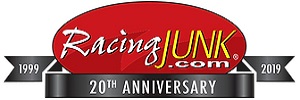It’s the middle of the night. Your car won’t start. You’re stuck on the side of the road, with nothing but the dim glow of your hazard lights and the unsettling silence around you.
What now?
Here’s what really happens during an emergency tow at 3 a.m. — no sugar-coating, no drama, just the straight-up truth of how it works, what to expect, and how to get through it without making things worse.
First Things First: Stay Put and Stay Safe
Before you even call a company for 24 hour towing Newcastle, your safety is priority number one. If you’re on a busy road or freeway, do your best to move your vehicle off to the shoulder or a quiet side street. Can’t move it? Turn on your hazard lights, stay inside the car with doors locked, and avoid standing outside, especially near traffic.
Nighttime emergencies can feel extra intense because of how isolated it is. But the key here is not to panic. Take a few minutes to gather yourself before making the call.
Making the Call: Who You Ring Matters
When you need help fast, it can be tempting to just search “tow truck near me” and call the first number that pops up. But not all towing services are created equal.
Ideally, you’ll already have roadside assistance or a trusted towing contact saved in your phone. If not, go for a licensed operator with 24/7 support. And be clear when explaining your situation—where you are, what the issue is (dead battery, flat tyre, engine trouble), and whether you’re in a dangerous spot.
They’ll give you an estimated arrival time, which can be anywhere from 15 minutes to over an hour, depending on your location. After that, you wait.
What the Tow Driver’s Doing While You Wait
On their end, the driver’s not just hopping in the truck and heading over. They’re:
- Checking the job details and your location
- Loading any tools or gear they might need
- Navigating to your car, which can take longer at night
- Watching for traffic conditions or road closures nearby
If they’re part of a larger dispatch team, they might be juggling multiple calls at once, so getting a realistic ETA can sometimes be tricky. But most drivers aim to arrive as quickly as they safely can.
What Happens When the Truck Shows Up
You’ll know the tow truck is near before you even see it; those flashing lights are hard to miss in the dark. Once they arrive, the driver will usually do a quick check-in:
- Confirm your name and vehicle
- Ask what’s happened and if you’ve already tried anything
- Assess where the vehicle is and how easy it’ll be to hook up
They’ll then either reverse the truck into position or pull up in front, depending on the tow setup. At this hour, things move faster than during the day. There’s less traffic, but also less visibility, so most drivers aim to load the vehicle as efficiently as possible without cutting corners.
If You’re Riding with the Driver
Some towing services allow you to ride with the driver, others don’t. If they do, the cab will usually have room for one or two people max.
You’ll need to buckle up and stay seated during the drive, which might feel odd at 3 a.m., especially if you’re still frazzled from the breakdown. The driver might chat with you, or they might stay quiet. Either way, it’s usually a fairly calm ride.
Make sure you have your drop-off location ready. Whether it’s your home, a mechanic, or a holding yard, you’ll need to be clear on where the vehicle’s going. Some tows include a certain number of kilometres in the base price—any further and you’ll likely be charged extra.
Payment and Paperwork (Yes, Even at 3 A.M.)
Once the car’s delivered, there’s usually a quick rundown of paperwork or digital forms. Even if it’s the middle of the night, most drivers will still need you to:
- Sign off on the job completion
- Confirm the address and vehicle details
- Settle any payments not covered by roadside assistance
Keep a record of what you’re given. That might include a printed slip, a photo of the job sheet, or just a digital receipt sent by text or email. You might be half-asleep, but having that info can save you hassle later, especially if you need to claim it through insurance.
You’re Home (or Somewhere Safe)… Now What?
Once you’re out of the situation, the reality sets in: your car’s still broken, and it’s probably not getting looked at until morning. But you’ve done the hard part.
Here’s what to do next:
- Get some rest – You’ll need a clear head to sort things out in daylight
- Call your mechanic first thing – Let them know the car’s on its way (or already there)
- Follow up with your insurer – If the breakdown is part of a claim, get that moving early
- Think about a roadside membership – If this was a one-off tow without cover, it might be worth setting something up
That quiet 3 a.m. ride in a tow truck might not be something you want to repeat, but at least now you know how it all works—and what to expect if it ever happens again.
Not All Emergencies Are Created Equal
There’s a big difference between a flat tyre on a quiet suburban street and breaking down on a freeway during a storm. But regardless of where or how it happens, the process of an emergency tow follows the same rough steps.
Being prepared—both mentally and practically—can make a huge difference. Save a few numbers in your phone. Know where you’d want your car taken. And most of all, stay calm when the worst happens.
Because while a 3 a.m. breakdown is never ideal, it’s not the end of the world. It’s just a late-night detour with a lift from someone who knows exactly what they’re doing.







